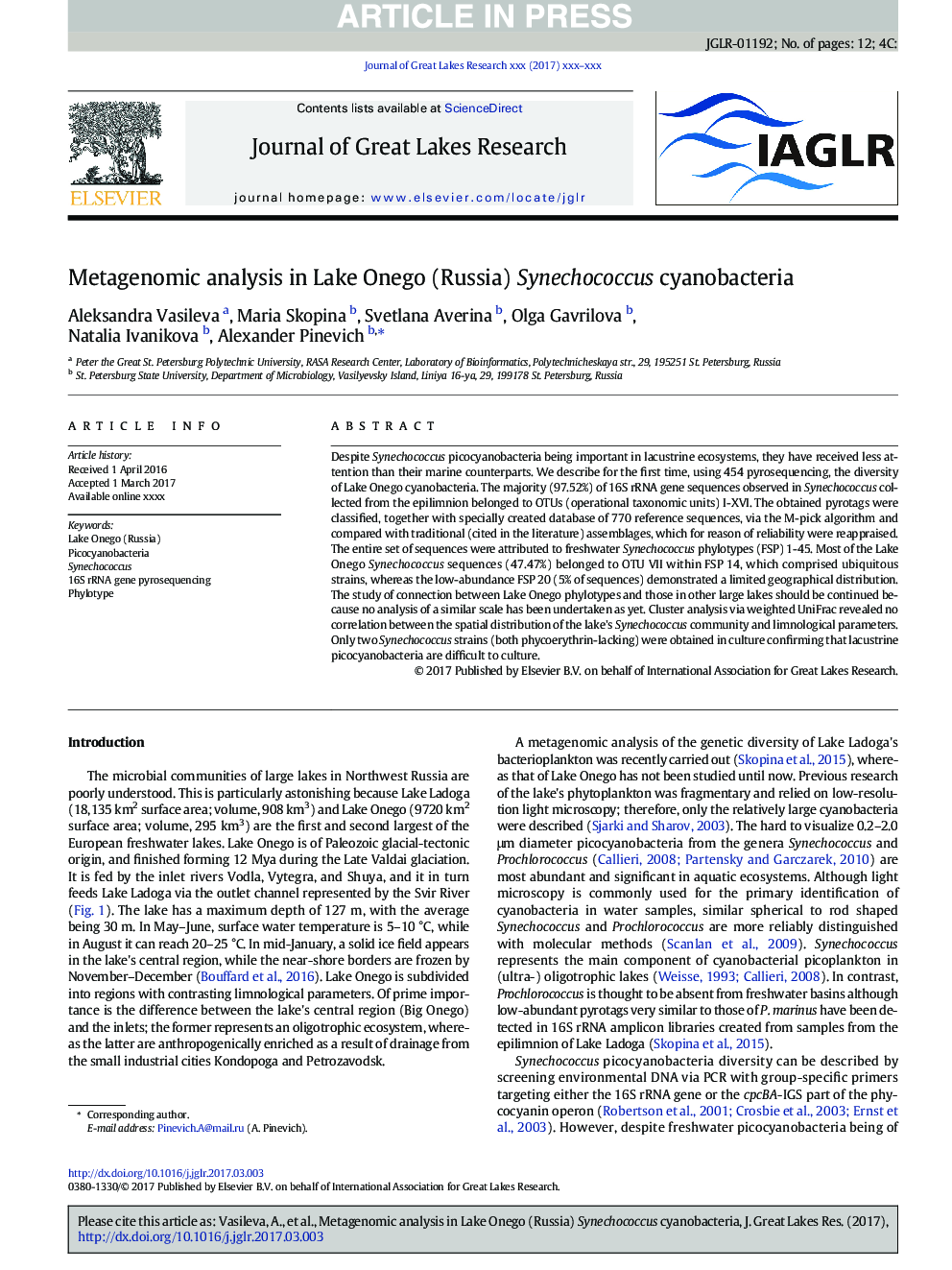| Article ID | Journal | Published Year | Pages | File Type |
|---|---|---|---|---|
| 5744616 | Journal of Great Lakes Research | 2017 | 12 Pages |
Abstract
Despite Synechococcus picocyanobacteria being important in lacustrine ecosystems, they have received less attention than their marine counterparts. We describe for the first time, using 454 pyrosequencing, the diversity of Lake Onego cyanobacteria. The majority (97.52%) of 16S rRNA gene sequences observed in Synechococcus collected from the epilimnion belonged to OTUs (operational taxonomic units) I-XVI. The obtained pyrotags were classified, together with specially created database of 770 reference sequences, via the M-pick algorithm and compared with traditional (cited in the literature) assemblages, which for reason of reliability were reappraised. The entire set of sequences were attributed to freshwater Synechococcus phylotypes (FSP) 1-45. Most of the Lake Onego Synechococcus sequences (47.47%) belonged to OTU VII within FSP 14, which comprised ubiquitous strains, whereas the low-abundance FSP 20 (5% of sequences) demonstrated a limited geographical distribution. The study of connection between Lake Onego phylotypes and those in other large lakes should be continued because no analysis of a similar scale has been undertaken as yet. Cluster analysis via weighted UniFrac revealed no correlation between the spatial distribution of the lake's Synechococcus community and limnological parameters. Only two Synechococcus strains (both phycoerythrin-lacking) were obtained in culture confirming that lacustrine picocyanobacteria are difficult to culture.
Related Topics
Physical Sciences and Engineering
Earth and Planetary Sciences
Earth and Planetary Sciences (General)
Authors
Aleksandra Vasileva, Maria Skopina, Svetlana Averina, Olga Gavrilova, Natalia Ivanikova, Alexander Pinevich,
